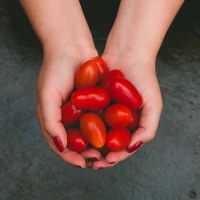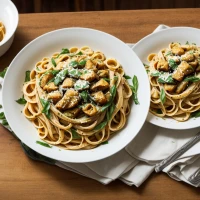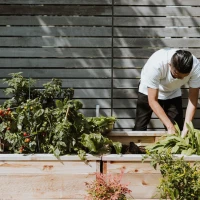Diving into the heart of Italian culinary splendor, the city of Genoa emerges as a glorious expedition of tastes and traditions. Amidst this gastronomic paradise, paste genovesi stands as a testimony to Genoa’s dedication to fresh and vibrant flavors, particularly in the realm of vegetable-rich dishes. As we embark on this journey, let us explore the subtleties of taste, the intricate preparation methods, and the cultural significance that position paste genovesi as an integral part of Italy’s food mosaic. Every bite encapsulates the authenticity of Genoese cuisine, whisking away gourmands on a sensory voyage to the coastal grandeur of Genoa.
The Essence of Paste Genovesi: Tradition Meets Taste
To appreciate the full spectrum of paste genovesi, we must delve into its origins and understand the influence of the Mediterranean climate on its creation. Historically, Genoa’s bustling ports and maritime commercial activities have facilitated a melting pot of influences, fostering a unique culinary scene that splendidly intertwines local agriculture with the bounties of the sea.
Historical Roots and Cultural Significance
Genoese cuisine, with paste genovesi at its heart, captures the essence of the Ligurian region’s history. This dish exemplifies how traditional Genoese cooks honored the local produce offered by their rugged terrain and mild climate, blending herbs, nuts, and fresh vegetables to achieve mouthwatering delicacies. Every family recipe, carefully passed down through generations, maintains the heart and soul of Genoese culture in each forkful.
Key Vegetables in Authentic Paste Genovesi
The vegetable medley within paste genovesi imparts an earthiness that’s uniquely Genoese. Vegetables like zucchini, eggplant, and bell peppers, alongside aromatic basil, are staples in these creations. Whether diced, ribboned, or pureed, they contribute to the dish’s texture and taste profile. Here, their natural flavors are skillfully elevated through traditional cooking methods.
Navigating the Landscape of Genoese Pasta Dishes
Genoa’s culinary landscape brims with an assortment of pasta creations, and paste genovesi presents itself in many appetizing smoke eater for homems. From the hearty trenette laced with pesto to the delicate trofie, these pastas serve as a canvas for showcasing the seasonal vegetable harvest.
The Quintessential Vegetable Pairings
When we talk about paste genovesi, we refer to a symphony of vegetables playing in harmony with pasta. Let’s unearth the quintessential pairings that make these dishes shine:
- Zucchini: Its mild, sweet flavor is a spring and summer highlight.
- Eggplant: The smoky, rich texture makes it a hearty ingredient.
- Bell Peppers: Their vibrant colors and sweetness add depth to any preparation.
- Potatoes and Beans: Often combined with pesto for an extra layer of savoriness.
Each vegetable contributes its unique note, creating an ensemble of flavors that is unmistakably Genoese and utterly delectable.
Genoese Pesto: The Heartbeat of Paste Genovesi
No discussion on paste genovesi would be complete pasta with baconout paying homage to Genoa’s world-renowned pesto. Its verdant hue is a nod to the lush Ligurian landscape where basil grows in abundance. Pesto, with its mix of basil, pine nuts, Parmigiano-Reggiano, garlic, and olive oil, does more than just complement vegetables; it transforms them, highlighting their freshness and elevating the entire dish.
A Step-by-Step Guide to Crafting Paste Genovesi
To savor truly authentic paste genovesi, one must not only taste but also create. The process of crafting these exquisite vegetable pasta dishes is an art form, involving precision, patience, and a passion for the produce.
Selecting the Right Ingredients
- Pasta: Opt for high-quality, durum wheat pasta which Genoa is famous for.
- Vegetables: Choose the freshest, locally-sourced vegetables for peak flavor.
- Herbs and Spices: Fresh basil, oregano, and garlic should be staples in your pantry.
The Art of Preparation
Mastering the art of preparing paste genovesi means understanding each step:
- Vegetable Prep: Begin by thoroughly washing your vegetables. Slice, dice, or julienne according to the recipe, taking care to maintain uniformity for even cooking.
- Cooking the Pasta: Bring a large pot of salted water to a rolling boil and cook your pasta al dente, as texture is key.
- Sautéeing the Vegetables: Over medium heat, sauté the vegetables in extra virgin olive oil until they reach their ideal tenderness.
- Combining Elements: Toss the cooked pasta with the sautéed vegetables, adding in dollops of fresh pesto.
Nutritional Benefits: Wholesome Goodness in Every Bite
Delving into the nutritional aspect of paste genovesi, one will find an abundance of health benefits owing to its rich vegetable content. The traditional ingredients used provide a well-rounded array of vitamins, minerals, and antioxidants.
Vegetables: The Powerhouses of Nutrition
The vegetables that form the cornerstone of paste genovesi come laden with nutritional advantages:
- Zucchini: High in fiber, low in calories, and rich in vitamin A.
- Eggplant: Packed with antioxidants, particularly nasunin found in the skin, which is known for promoting brain health.
- Bell Peppers: Excellent sources of vitamin C, supporting immune health.
Pesto: A Nutrient-Dense Condiment
Pesto, although calorie-dense due to the olive oil and nuts, packs a punch with healthy fats, essential for heart health. The basil is a great source of vitamin K, and the garlic provides allicin, known for its anti-inflammatory properties.
Genoa on Your Plate: Bringing the Taste Home
Genoese cuisine’s diversity goes beyond the classic pesto genovese; it’s a culinary canvas waiting for your personal touch. Here’s how to bring a taste of Genoa to your own kitchen.
Tips for Perfect Paste Genovesi Every Time
- Use Fresh Ingredients: The foundation of any paste genovesi is the freshness of its components.
- Prepare Pesto from Scratch: Store-bought pesto can’t rival the taste of homemade. It’s simpler than you think and well worth the effort.
- Cook Pasta Properly: Achieving al dente pasta is crucial - it should be tender but firm to the bite.
Creative Variations
Feel free to experiment and create your own versions of paste genovesi:
- Add Different Vegetables: Depending on the season, try adding artichokes, fava beans, or pumpkin.
- Infuse with Seafood: Genoa’s coastal location means seafood is often incorporated into their pasta dishes, so why not add some shrimp or clams?
- Go Vegan: Substitute cheese and nuts in the pesto with nutritional yeast and seeds for a vegan alternative.
A Love Affair with Flavors: Client Testimonials and Rave Reviews
The proof of the pasta is in the eating, and those who have indulged in paste genovesi can attest to its delightful impact. Below, we share heartfelt testimonials that speak volumes:
- “A springtime dinner that brought Genoa to our home. The zesty pesto mingled with fresh-off-the-vine tomatoes created a harmonious flavor profile we’ll never forget.” – Martha P.
- “I never imagined eggplant and pasta could dance so well together. The textures, the flavors… it’s a masterpiece on a plate.” – Damien L.
By immersing yourself in the creation and enjoyment of paste genovesi, you participate in a longstanding tradition of taste and excellence. Every forkful is a tribute to the diversity and splendor of Genoa’s cuisine, and most importantly, it’s a celebration of the humble vegetable, which stands proud at the core of this iconic dish. Indulge in this culinary journey where each bite transports you to the picturesque port city of Genoa, and appreciate the true essence of Italian gastronomy.










